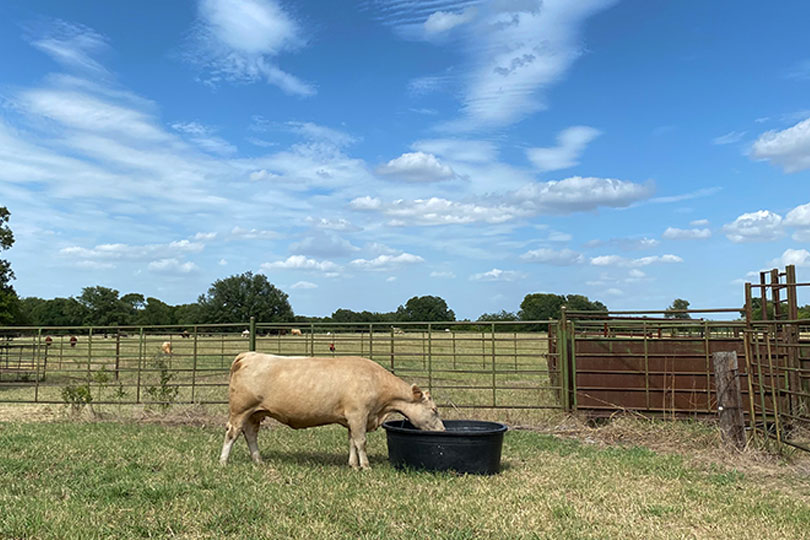By Jennifer Dorsett
Field Editor
During this time of year, water troughs are ideal breeding grounds for algae, thanks to high temperatures, sunshine and the introduction of organic matter from cattle saliva, manure and other debris. Blue-green algae, or cyanobacteria, can thrive in these environments.
And while a bit of a mossy taste doesn’t seem to deter cattle and other livestock from drinking, the cyanobacterial toxins released by algae can cause harm or even death if ingested in large amounts.
Clinical signs of cattle affected by blue-green algae toxicosis may include muscle tremors, seizures, excessive salivation, watery or bloody diarrhea, liver failure and death within hours of exposure, according to the Texas A&M Veterinary Medical Diagnostic Laboratory.
But there are simple steps livestock owners can take to help keep troughs clean.
Placing a physical barrier such as railing around troughs will reduce the amount of urine, feces and debris animals may bring into contact with the water. Be sure to position the rail low enough that animals cannot slip under it and become trapped, which could result in accidental drowning.
Moving troughs in shaded areas or reducing the amount of direct sunlight will reduce algae growth, which need sunlight to survive and multiply.
It’s also a good practice to monitor water pH, salinity and temperature. Keeping those parameters in control can greatly reduce algae bloom.
If the water in the trough is dirty and needs to be dumped, veterinarians recommend disinfecting the trough with household bleach, scrubbing the walls and rinsing it thoroughly before refilling.
Up to two ounces of household chlorine bleach may be added per 50 gallons of water to discourage algae growth. Keep animals away from the trough for at least 30 minutes after adding the disinfectant to allow the chemical time to become thoroughly diluted.
Some ranchers have had success with adding goldfish to water troughs. Four to six fish per 100 gallons of capacity should be sufficient to keep algae at bay.
Fish also need shelter, such as bricks or rocks in the bottom of the trough, to protect them from predators such as birds and raccoons.
The introduction of goldfish to the trough necessitates a little extra monitoring, however.
If water levels dip too low, become too warm or if the water is poorly oxygenated, fish will die. Toxins released after their death can be as harmful as toxic algae.
Be sure to check all troughs routinely and be on the lookout for algae growth, foreign objects or other debris that can reduce water quality.
Consult a veterinarian for additional tips and maintenance products that may be applicable to your area.


FYI, Dad
I have a totally inert volcanic mineral that will absorb and hold the nitrogen which is the food source for algae. 406 581 3450 Mike Doud